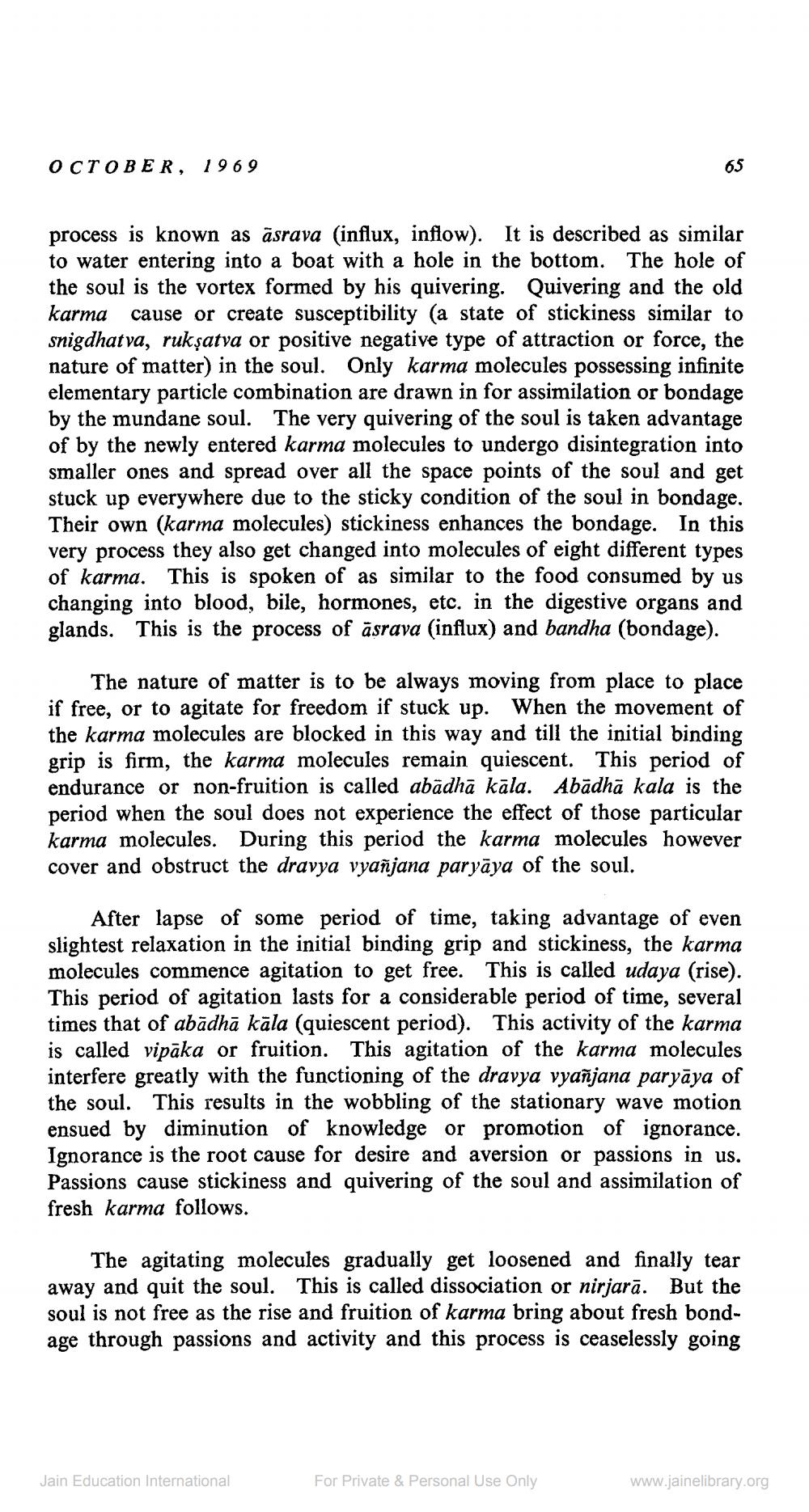________________
OCTOBER, 1969
65
process is known as ásrava (influx, inflow). It is described as similar to water entering into a boat with a hole in the bottom. The hole of the soul is the vortex formed by his quivering. Quivering and the old karma cause or create susceptibility (a state of stickiness similar to snigdhatva, rukșatva or positive negative type of attraction or force, the nature of matter) in the soul. Only karma molecules possessing infinite elementary particle combination are drawn in for assimilation or bondage by the mundane soul. The very quivering of the soul is taken advantage of by the newly entered karma molecules to undergo disintegration into smaller ones and spread over all the space points of the soul and get stuck up everywhere due to the sticky condition of the soul in bondage. Their own (karma molecules) stickiness enhances the bondage. In this very process they also get changed into molecules of eight different types of karma. This is spoken of as similar to the food consumed by us changing into blood, bile, hormones, etc. in the digestive organs and glands. This is the process of asrava (influx) and bandha (bondage).
The nature of matter is to be always moving from place to place if free, or to agitate for freedom if stuck up. When the movement of the karma molecules are blocked in this way and till the initial binding grip is firm, the karma molecules remain quiescent. This period of endurance or non-fruition is called abadhā kāla. Abādhā kala is the period when the soul does not experience the effect of those particular karma molecules. During this period the karma molecules however cover and obstruct the dravya vyañjana paryāya of the soul.
After lapse of some period of time, taking advantage of even slightest relaxation in the initial binding grip and stickiness, the karma molecules commence agitation to get free. This is called udaya (rise). This period of agitation lasts for a considerable period of time, several times that of abādhā kāla (quiescent period). This activity of the karma is called vipāka or fruition. This agitation of the karma molecules interfere greatly with the functioning of the dravya vyañjana paryāya of the soul. This results in the wobbling of the stationary wave motion ensued by diminution of knowledge or promotion of ignorance. Ignorance is the root cause for desire and aversion or passions in us. Passions cause stickiness and quivering of the soul and assimilation of fresh karma follows.
The agitating molecules gradually get loosened and finally tear away and quit the soul. This is called dissociation or nirjarā. But the soul is not free as the rise and fruition of karma bring about fresh bondage through passions and activity and this process is ceaselessly going
Jain Education International
For Private & Personal Use Only
www.jainelibrary.org




